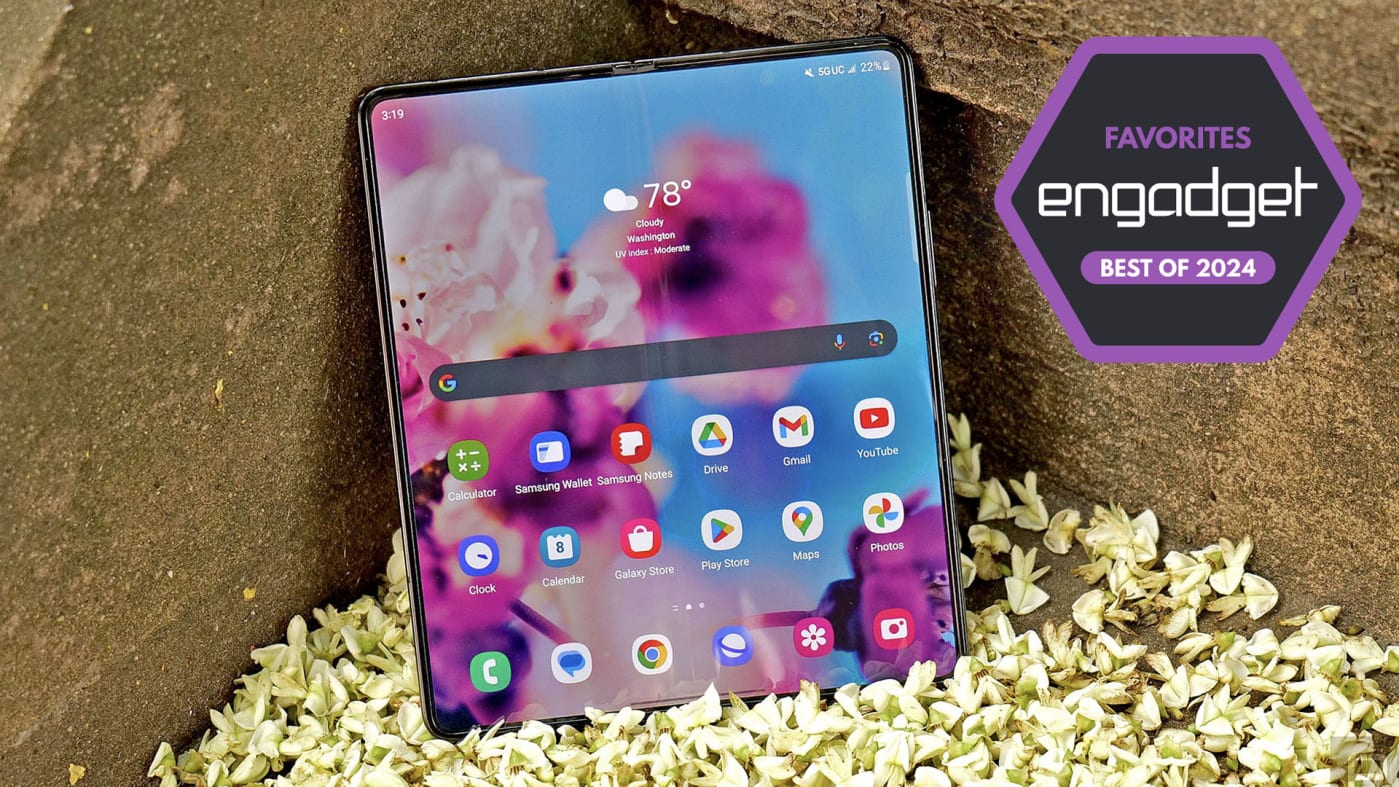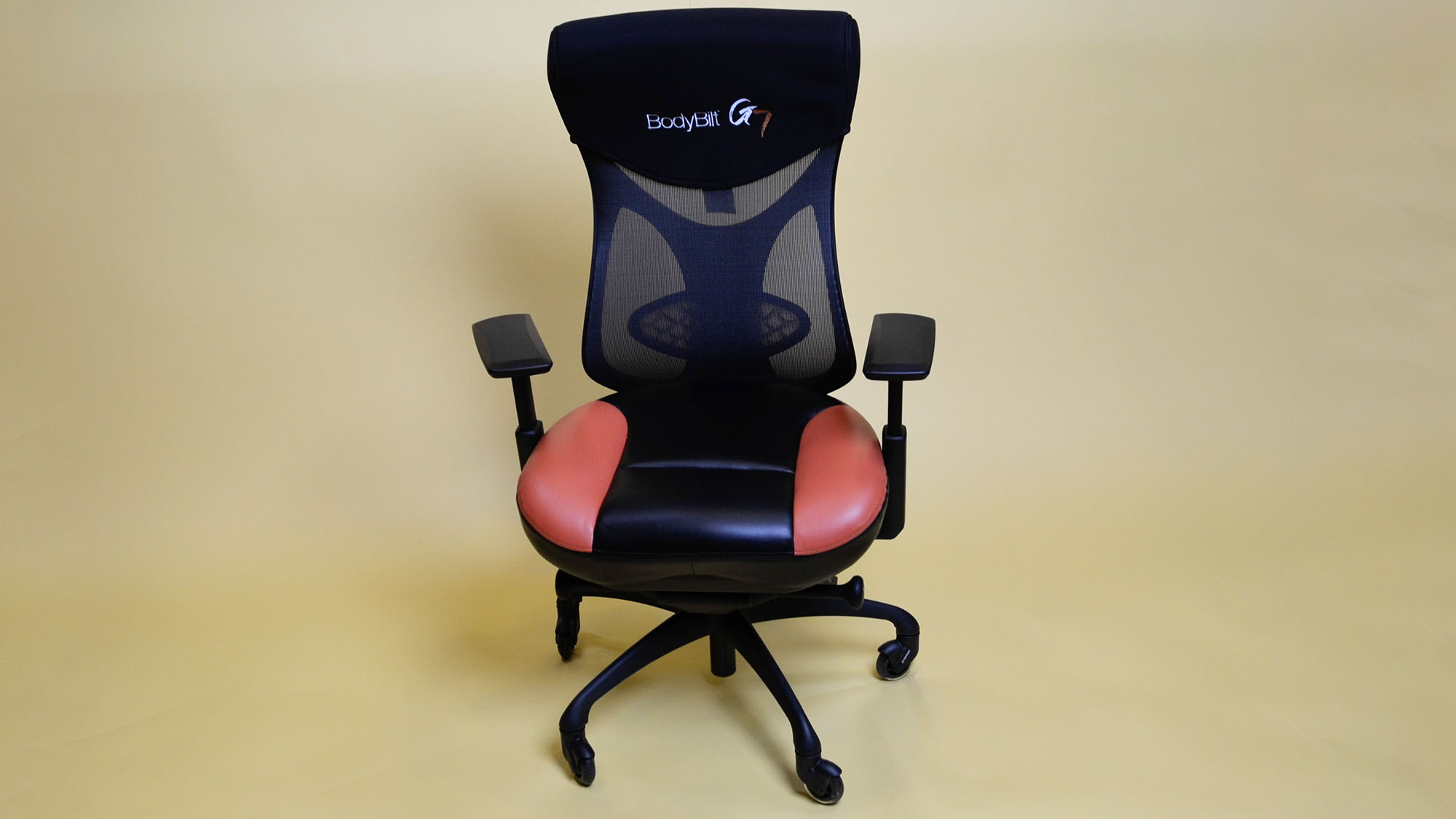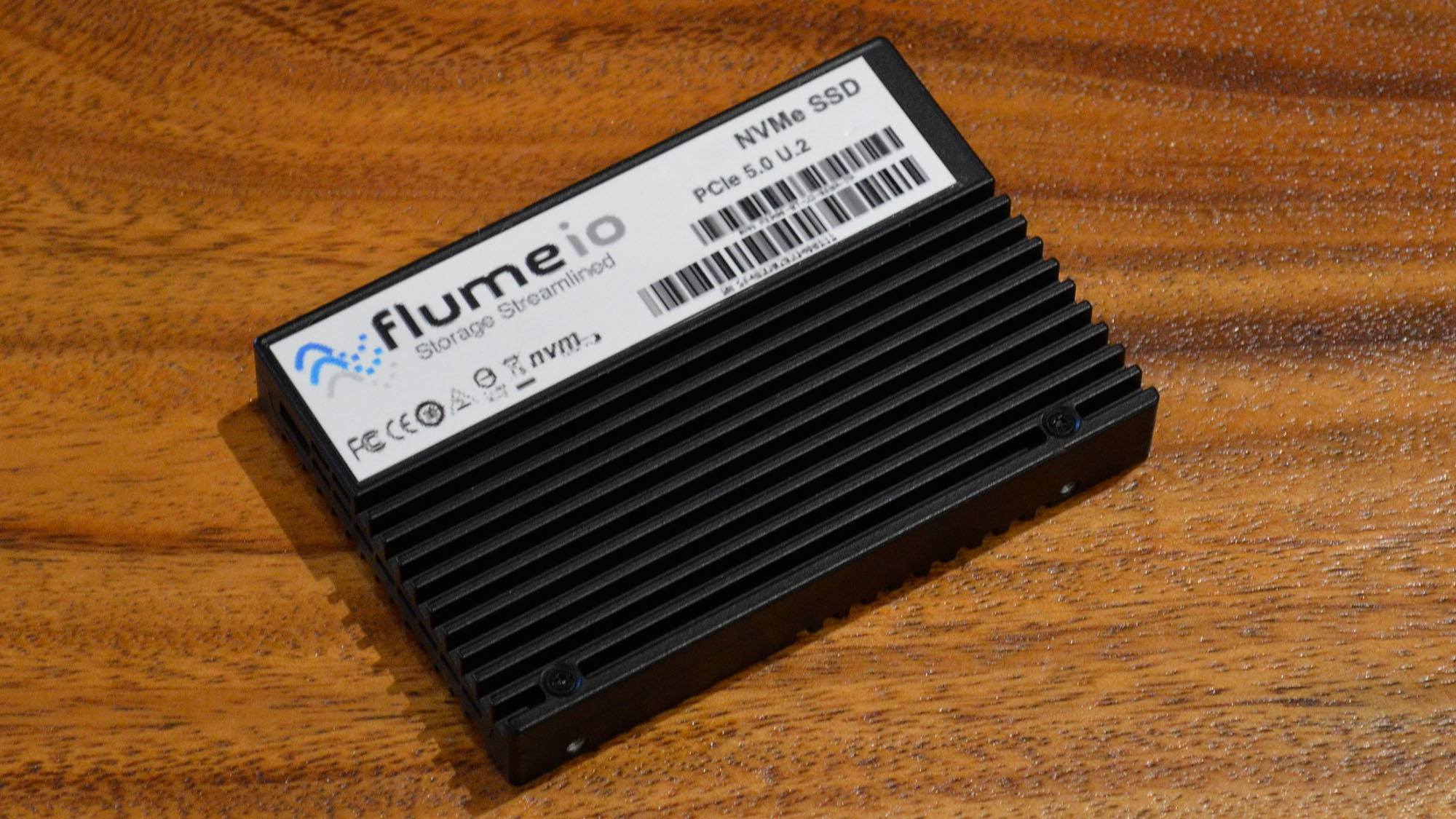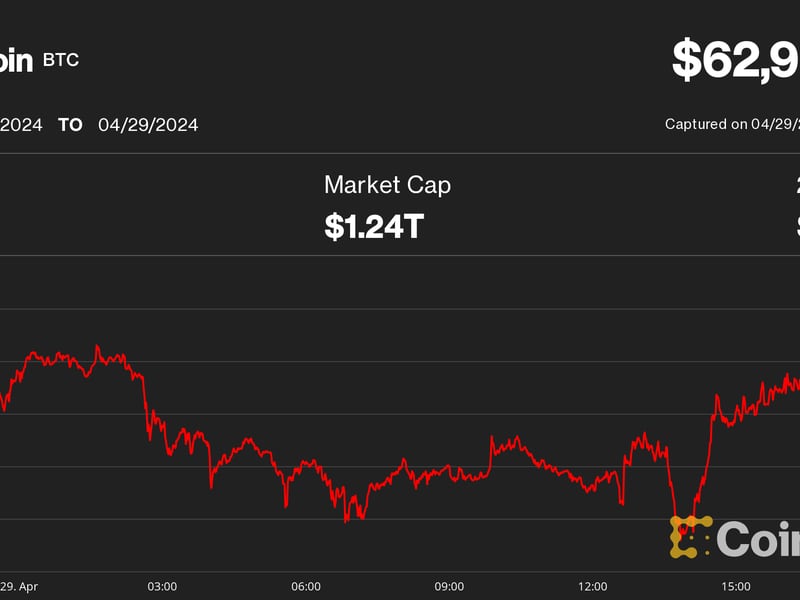The best foldable phones for 2024
Folding phones have come a long way since the original Samsung Galaxy Fold came out in 2019. They’re smaller, more durable and, even if they aren’t exactly the most budget-friendly phones, they’re more affordable now, too. Whereas you may not have considered a foldable phone as your daily driver five years ago, they’re much more viable options today — and you have many more to choose from. If you’ve been toying with the idea of switching to a folding phone, or you’re ready to upgrade the foldable you already have, we at Engadget can help with your decision-making process. We've spent hundreds of hours and many days testing and reviewing the best foldable phones on the market right now — here's everything you need to know before picking one up.Note: For this guide, we’re focusing on devices that are widely available in North America and Europe. That’s because while there are even more options for people who live in Asia (especially China), they are often difficult to buy from abroad and may not support your local carriers. How we test When evaluating foldables, we consider the same general criteria as we do when we’re judging the best smartphones. Devices need to have good battery life (at least a full day’s use), bright displays (peaks of at least 1,000 nits), sharp cameras and responsive performance. That said, foldable phones come in different shapes (and sizes); there are varying designs that may appeal to different types of people. For those who prefer more compact and stylish devices, flip-style foldables resemble old-school namesakes but with flexible interior displays (typically six to seven inches diagonally) and smaller exterior screens. Alternatively, for power users and people who want to maximize mobile productivity, there are larger book-style foldables (with seven to eight-inch main displays) that can transform from a candy bar-style phone to essentially a small tablet when opened. Are foldable phones worth it? A note on durability Aside from their displays, the biggest difference between foldable phones and more traditional handsets is durability. That’s because while some models like the Pixel Fold and Samsung’s Galaxy Z line offer IPX8 water resistance (which is good for submersions of up to five feet for 30 minutes), their flexible screens – which are largely made from plastic – present some unique challenges. Most foldables come with factory-installed screen protectors. However, unlike regular phones, users are instructed not to remove them without assistance from approved service centers. Thankfully, Samsung does offer one free screen protector replacement for its foldables, while Google charges between $29 and $129 depending on the warranty status of your device. That said, while we can’t do long-term testing for every foldable phone on the market, after personally using the Galaxy Z Fold 3 and Galaxy Z Fold 4 each for a year, I’ve found that Samsung’s pre-installed screen protector tends to start bubbling nine to 12 months after purchase. So you’ll probably want to factor in that your foldable may need some sort of servicing after about a year unless you plan on removing the screen protector entirely (which is possible, but goes against most manufacturers' instructions). Furthermore, foldable phone owners need to be mindful about keeping sharp objects away from their flexible displays, as rocks, keys or even pressing down very hard with a fingernail can leave permanent marks. In the event that you need to get a flexible screen serviced, you’re potentially facing a much higher repair bill when compared to a typical phone (up to $500 or more depending on the model and the severity of the damage). In short, while the ruggedness of foldable phones has improved a lot, they're still more delicate than traditional handsets, which is something you need to account for. Best alternative foldable phone options As mentioned earlier, there’s an abundance of exotic – and often more advanced – foldables well beyond the Samsungs and Motorolas of the world. However, you either need to have access to phone importers or actually live in Asia, and don’t mind sideloading missing Google apps on your own. Xiaomi Mix Fold 3 The best overall book-style foldable is none other than the Xiaomi Mix Fold 3, which specs include Qualcomm’s latest Snapdragon 8 Gen 2 processor, four Leica-enhanced rear cameras (including a 5x zoom periscope) and a 4,800mAh battery within its surprisingly slim body – 10.86mm when folded, and 5.26mm when unfolded. Xiaomi even goes as far as boasting a 500,000-fold durability – more than doubling that of the Galaxy Z Fold 5. Despite its absence in the western markets, the Mix Fold 3’s newly-added 50W wireless charging option would be much welcomed over there. The phone comes with a protective case for both halves of the body, with the rear shell offering a kickstand for easier video playback and video calls. One Hong Kong-based specialist can send a Mix Fold 3 to the US from around

Folding phones have come a long way since the original Samsung Galaxy Fold came out in 2019. They’re smaller, more durable and, even if they aren’t exactly the most budget-friendly phones, they’re more affordable now, too. Whereas you may not have considered a foldable phone as your daily driver five years ago, they’re much more viable options today — and you have many more to choose from. If you’ve been toying with the idea of switching to a folding phone, or you’re ready to upgrade the foldable you already have, we at Engadget can help with your decision-making process. We've spent hundreds of hours and many days testing and reviewing the best foldable phones on the market right now — here's everything you need to know before picking one up.
Note: For this guide, we’re focusing on devices that are widely available in North America and Europe. That’s because while there are even more options for people who live in Asia (especially China), they are often difficult to buy from abroad and may not support your local carriers.
How we test
When evaluating foldables, we consider the same general criteria as we do when we’re judging the best smartphones. Devices need to have good battery life (at least a full day’s use), bright displays (peaks of at least 1,000 nits), sharp cameras and responsive performance. That said, foldable phones come in different shapes (and sizes); there are varying designs that may appeal to different types of people.
For those who prefer more compact and stylish devices, flip-style foldables resemble old-school namesakes but with flexible interior displays (typically six to seven inches diagonally) and smaller exterior screens. Alternatively, for power users and people who want to maximize mobile productivity, there are larger book-style foldables (with seven to eight-inch main displays) that can transform from a candy bar-style phone to essentially a small tablet when opened.
Are foldable phones worth it? A note on durability
Aside from their displays, the biggest difference between foldable phones and more traditional handsets is durability. That’s because while some models like the Pixel Fold and Samsung’s Galaxy Z line offer IPX8 water resistance (which is good for submersions of up to five feet for 30 minutes), their flexible screens – which are largely made from plastic – present some unique challenges.
Most foldables come with factory-installed screen protectors. However, unlike regular phones, users are instructed not to remove them without assistance from approved service centers. Thankfully, Samsung does offer one free screen protector replacement for its foldables, while Google charges between $29 and $129 depending on the warranty status of your device. That said, while we can’t do long-term testing for every foldable phone on the market, after personally using the Galaxy Z Fold 3 and Galaxy Z Fold 4 each for a year, I’ve found that Samsung’s pre-installed screen protector tends to start bubbling nine to 12 months after purchase. So you’ll probably want to factor in that your foldable may need some sort of servicing after about a year unless you plan on removing the screen protector entirely (which is possible, but goes against most manufacturers' instructions).
Furthermore, foldable phone owners need to be mindful about keeping sharp objects away from their flexible displays, as rocks, keys or even pressing down very hard with a fingernail can leave permanent marks. In the event that you need to get a flexible screen serviced, you’re potentially facing a much higher repair bill when compared to a typical phone (up to $500 or more depending on the model and the severity of the damage). In short, while the ruggedness of foldable phones has improved a lot, they're still more delicate than traditional handsets, which is something you need to account for.
Best alternative foldable phone options
As mentioned earlier, there’s an abundance of exotic – and often more advanced – foldables well beyond the Samsungs and Motorolas of the world. However, you either need to have access to phone importers or actually live in Asia, and don’t mind sideloading missing Google apps on your own.
Xiaomi Mix Fold 3
The best overall book-style foldable is none other than the Xiaomi Mix Fold 3, which specs include Qualcomm’s latest Snapdragon 8 Gen 2 processor, four Leica-enhanced rear cameras (including a 5x zoom periscope) and a 4,800mAh battery within its surprisingly slim body – 10.86mm when folded, and 5.26mm when unfolded. Xiaomi even goes as far as boasting a 500,000-fold durability – more than doubling that of the Galaxy Z Fold 5. Despite its absence in the western markets, the Mix Fold 3’s newly-added 50W wireless charging option would be much welcomed over there. The phone comes with a protective case for both halves of the body, with the rear shell offering a kickstand for easier video playback and video calls. One Hong Kong-based specialist can send a Mix Fold 3 to the US from around $1,500 with shipping included, which is still much cheaper than Samsung’s equivalent. — Richard Lai, Senior Reporter
Honor Magic V2
Another worthy contender is the Honor Magic V2, which currently holds the title for the slimmest foldable phone available. We’re talking about just 9.9mm thick when folded, and a mere 4.7mm thick when opened, but it’s still a full-blown flagship device. Weighing at just 231g (8.15oz), this is the lightest book-style foldable phone as well. Funnily enough, the Magic V2 also packs the largest battery capacity in this category, offering 5,000mAh of juice thanks to Honor’s silicon-carbon battery – a breakthrough tech in the mobile industry. The obvious trade-off here is the missing wireless charging feature, but you do get a durability rating of 400,000 folds. Sadly, due to limited availability, the Magic V2 costs slightly more – around $1,670, shipping included, from the same Hong Kong shop. — R.L.
Oppo Find N3 Flip
If you’d prefer a smaller flip-style foldable from overseas, the Oppo Find N3 Flip is the only triple-camera option at the time of writing this guide. While others only offer a main camera and an ultra-wide camera, the Find N3 Flip benefits from an additional 32-megapixel 2x portrait shooter next to its 3.26-inch external screen (and you still get a 32-megapixel selfie camera on the inside). As a bonus, this clamshell has a physical mute switch, a whopping 600,000-fold durability and a generous 4,300mAh battery. That said, wireless charging is again a no-show here. You can pick up a Find N3 Flip in either black, gold or pink, and importing from Hong Kong should cost around $1,090 with shipping included. There’s no price advantage in this case, so it’s more about how much you want Oppo’s designs, features and accessories than anything else. — R.L.This article originally appeared on Engadget at https://www.engadget.com/best-foldable-phones-160030013.html?src=rss















![The Fallout 4 Upgrade Isn't Free For Owners On PS Plus And They're Furious [Update: Bethesda Has Fixed It]](https://i.kinja-img.com/image/upload/c_fill,h_675,pg_1,q_80,w_1200/b9aa9fc49e720f4b832bfbd9cb470c3e.jpg)













:quality(85):upscale()/2024/04/29/696/n/1922507/9b340932662fbff8a80e06.43948309_.jpg)
:quality(85):upscale()/2024/04/29/758/n/1922153/816a06ae662fd4cdb89596.06452704_.jpg)







